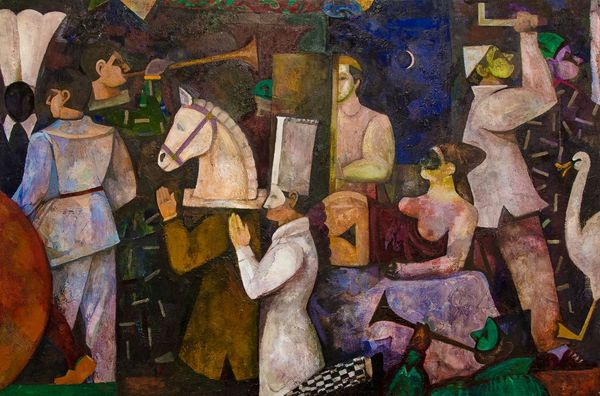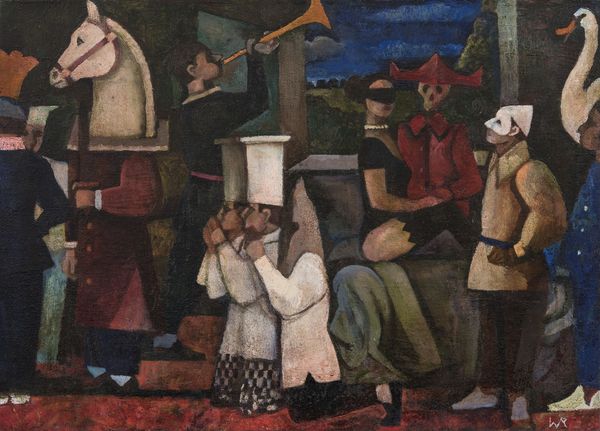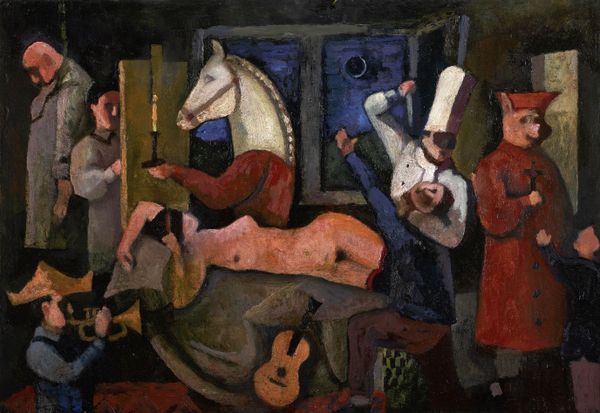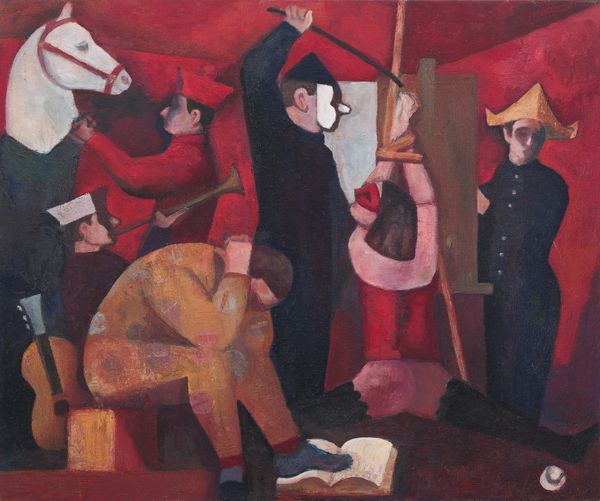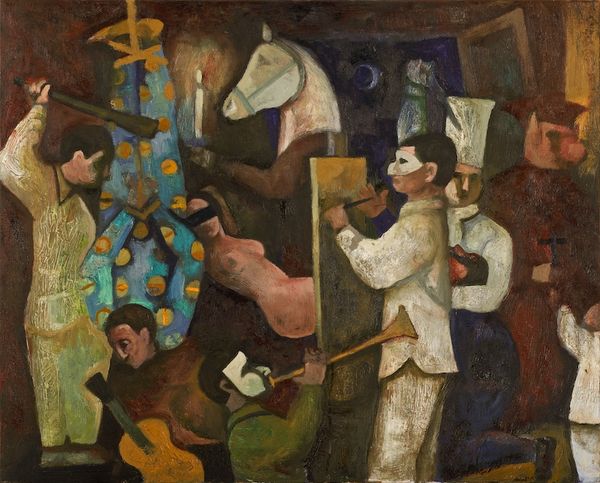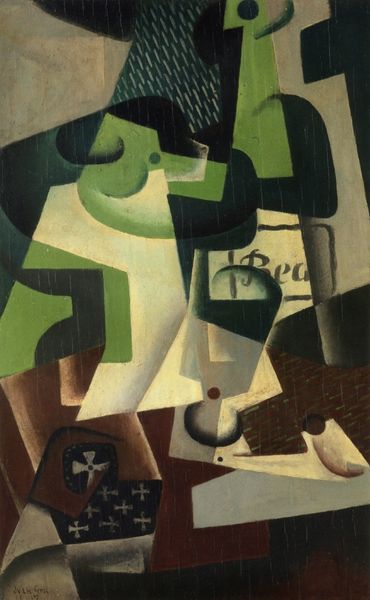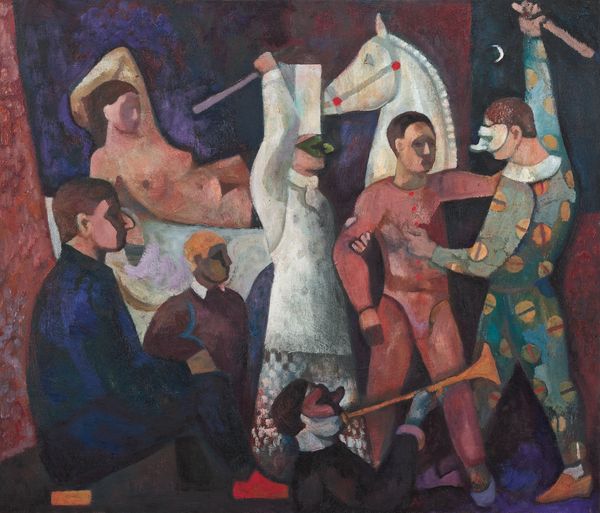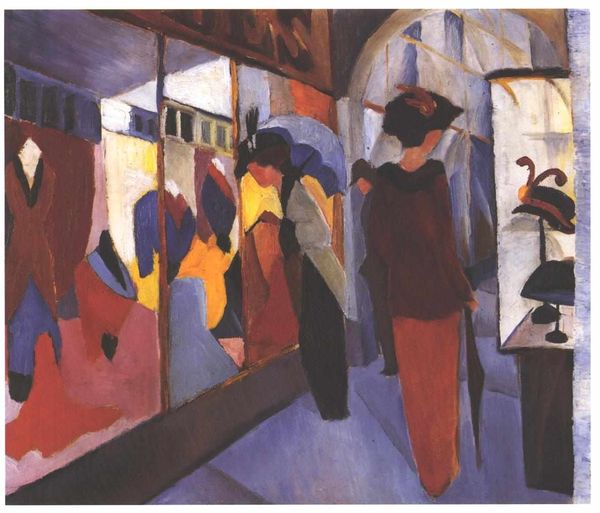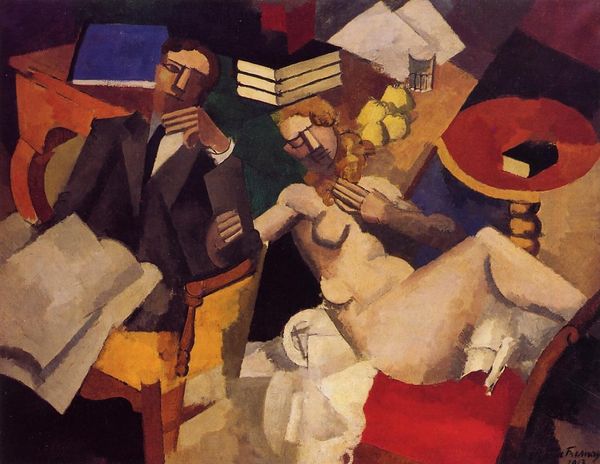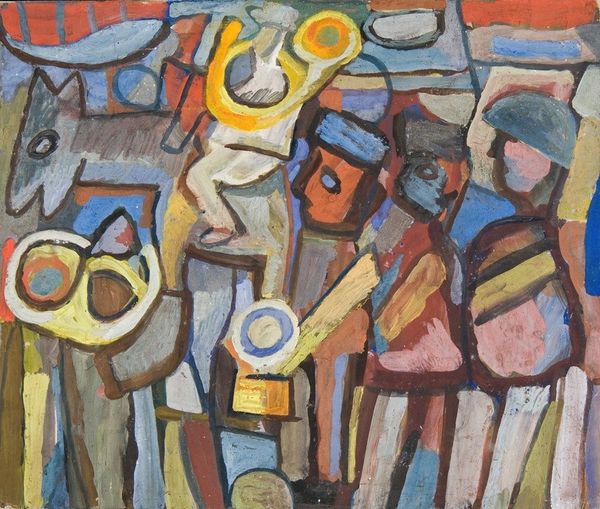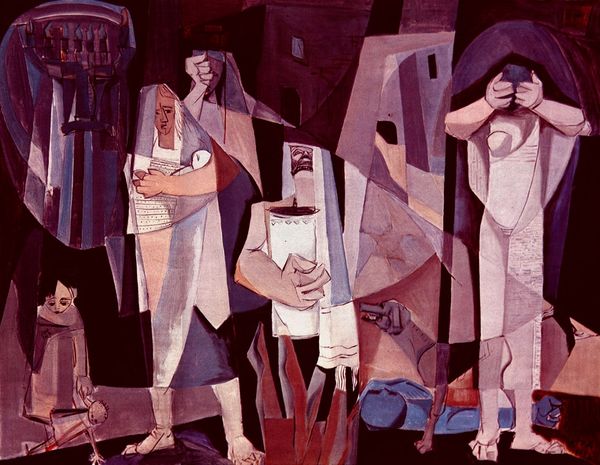
painting, oil-paint
#
contemporary
#
narrative-art
#
painting
#
oil-paint
#
figuration
#
oil painting
#
cityscape
Copyright: Reproduction by permission of the artist
Editor: William Balthazar Rose’s "The Corso and the Painter," created in 2018 using oil paints, presents an intriguing cityscape filled with figures. There's a dreamlike quality, and I’m drawn to the muted color palette. How do you interpret this work? Curator: Well, I see it as a commentary on the role of the artist within society, specifically in relation to civic spectacle. Notice the positioning of the painter, seemingly at the center of this corso, this parade. Who controls the narrative being presented, and who gets to document it? Are they complicit, or are they offering a critique? Editor: That’s interesting! I hadn't considered the power dynamics. The procession does seem rather performative, and the painter is right in the thick of it. Is Rose suggesting something about the artist's role in constructing or perhaps even legitimizing these types of events? Curator: Precisely. Think about the socio-political context in which art is created and displayed. What institutions support the production and circulation of imagery? Rose may be subtly questioning whether the artist is merely a recorder or an active participant who inevitably shapes our understanding. Consider also the gazes within the image—who is looking at whom, and why? Editor: It seems like everyone is either facing forward or is deeply involved in the event! You have definitely given me much to think about regarding the public responsibility of image creation. Curator: Indeed. And that's often where the power truly lies - in the spaces and the individuals we spotlight. Editor: Thank you so much! This really opened my eyes to layers within the work that I would have completely missed! Curator: My pleasure. Art reflects not only reality, but the systems which perceive reality.
Comments
No comments
Be the first to comment and join the conversation on the ultimate creative platform.
